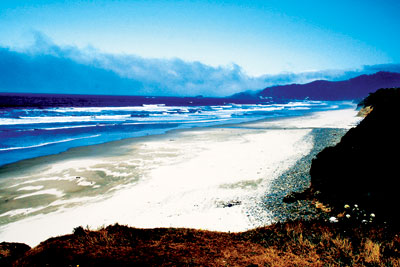All Nonfiction
- Bullying
- Books
- Academic
- Author Interviews
- Celebrity interviews
- College Articles
- College Essays
- Educator of the Year
- Heroes
- Interviews
- Memoir
- Personal Experience
- Sports
- Travel & Culture
All Opinions
- Bullying
- Current Events / Politics
- Discrimination
- Drugs / Alcohol / Smoking
- Entertainment / Celebrities
- Environment
- Love / Relationships
- Movies / Music / TV
- Pop Culture / Trends
- School / College
- Social Issues / Civics
- Spirituality / Religion
- Sports / Hobbies
All Hot Topics
- Bullying
- Community Service
- Environment
- Health
- Letters to the Editor
- Pride & Prejudice
- What Matters
- Back
Summer Guide
- Program Links
- Program Reviews
- Back
College Guide
- College Links
- College Reviews
- College Essays
- College Articles
- Back
Mystical Rays
The highly underrated oceanic animal is also one of the most mystifying of them all. Stingrays have been around for millions of years and continue to develop and adapt to their aquatic environment. There are dozens of types of these flat-bodied creatures that all belong to the Dasyatidae family. The endangerment of this species is staggering making it harder and harder to keep them around in the wild resulting to the plethora of them in captivity. A significant impact that stingrays have is their long, barbed tail that has a number of uses. It is crucial to bring back these rays to the wild and get the species back on track. Stingrays are an important animal to life because of their crucial tail use, the economic use, and asset to the ecosystem.
The usefulness of the barb of a stingray is the prime asset of these fish. The tail usually has serrated edges and a sharp point that is an impeccable use of self-defense. The tail of the ray can actually grow to over twice the length of the actual, round body having up to eight inch long segments. Stingrays have incredible accuracy when it comes to using their barbs. One the ray feels threated it will whip the tail into attack position and thrust it into the predator. Many times pieces of the barb, or even the whole thing, will break off in the victim and continue to inflict more damage as it moves. Fortunately, the stingray can quickly regenerate fragments or whole barbs quick and effectively to ensure total protection on itself. Other important aspects are the agility and flexibility of the ray helps that helps contort their bodies and move the barb in any direction to in order to it the enemy. The underside of the spiny tail produces a venomous slime that can easily be injected into the wound of a victim. The poison can be potent enough to kill dozens of different species, including humans, and can even be deadly long after the death of the stingray. If one so happens to be struck by the tail of a stingray with no medical attention nearby there are a few steps that will help you treat the wound. The first thing to do is relax because most incidents are far from fatal. Next one should soak the infected limb in a tub of hot water, as hot as tolerable, for two hours, adding soap may help. After this one should wrap the wound in a clean bandage and finally use a topical antibiotic to reduce inflation and pain. After these steps are taken it is important to take the victim to an emergency room as soon as possible. An interesting use was in Ancient Greek where dentists extracted the venom from the spine of the rays and used it as an anesthetic for patients, this is no longer accepted.
Stingrays also have a substantial impact on our economy having enough influence to skew certain portions of the market. Each year thousands of tourists go to various tropical paradises and partake in the exotic event of swimming with stingrays. The cost of this activity will cost an arm and a leg but the experience is unforgettable. The revenue brings in millions of dollar each year and tremendously helps the economy stabilize with a reduction in the probability of inflation. Many people argue that the economy is bad now, but without events such as swimming with these rays our economy would spiral into a dramatic downfall. Countries such as Malaysia and Singapore consume thousands of pounds of stingrays each year. The cost of capturing, buying, and preparing each ray also has a positive impact on the economy, specifically restaurants and fish markets. Japan uses the skin of the rays to make various items because of its durability and texture, causing it not to slip. The outer layer is can be made into exotic shoes, boots, belts, wallets, jackets, and even cell phone cases. All of these aspects add to our economy as they benefit and strengthen the global austerity.
Rays play a huge roll in both freshwater and marine ecosystems that solidify the environment for all species. Due to the wide distribution and diversity of stingray species, the corresponding outcome is that these animals are necessary for a healthy, clean ecosystem. All stingrays are carnivorous and feed on a variety of prey. Most of these animals will devour anything near or on the sea floor as they act like vacuum cleaners for the sea. Even the sight of a few stingrays in a body of water signifies that the area is pure. Because stingrays are high up on the food chain they will eat organisms such as mollusks, crabs, oysters, and worms which help clean up the environment. As the stingrays unearth the sand while looking for prey they also aid smaller animals in finding buried food contributing to the fact that these animals are key members to the ecosystem. Just like most strong environments, stingrays are prey for larger fish and sharks that help to balance populations of all animals.
Stingrays are slowly fading from the wild and affecting our lives more than we realize. These rays are extremely underrated for what they provide and need to be kept around for as long as possible. Without such animals our economy would begin to dip along with the marine and freshwater lifestyles being damaged. Captivity for these animals puts a barrier on their typical life span because of all the human interaction. This causes more to be extracted from the environment and placed into aquariums or zoos for people to view. The species that has grown and developed for millions of years has helped contribute the way our world operates now and we cannot afford another species extinction, especially that of stingrays.

Similar Articles
JOIN THE DISCUSSION
This article has 0 comments.
